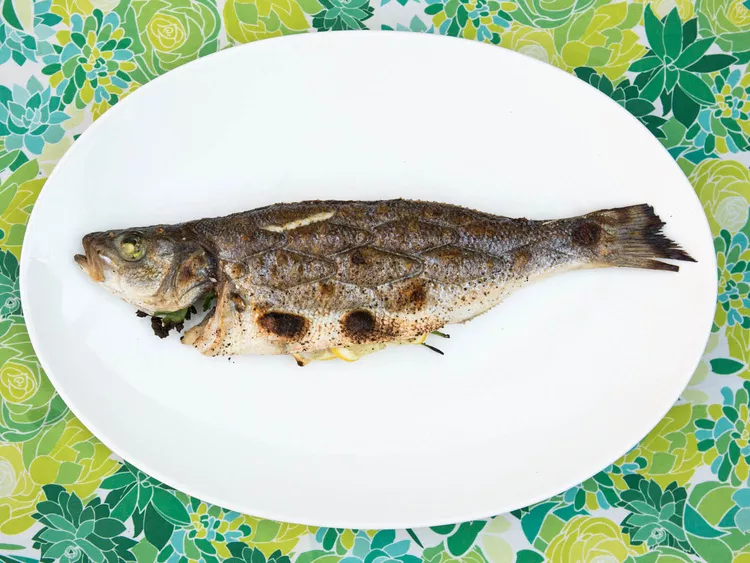Last week I began my mission to encourage more people to roast whole fish and cook it at home. I have floated a few theories as to why many home cooks are still intimidated by this idea. Most of them had to do with shopping and cooking.
Advertisement Banner
Uncertainty about how to prepare whole fish is another reason why people avoid it. Un-carved, cooked whole fish becomes a messy disaster when diners use their forks to shred the meat. The result is a pile of bones and bits of fish. Imagine how a roasted whole chicken would look if we did it that way at dinner! It’s true that I like to tear apart whole chickens and eat them with my hands.
How to grill whole fish
Once you learn the basics, it is incredibly simple. For proof, I did the entire thing with a butter-knife and a spoon. It would have been possible to do it with just two spoons. Once you’ve done it a few times, it will become second nature. Here’s how.
1:58
How to Carve a Whole fish and Serve it
How to Carve Whole Cooked fish
Place a piece of fish on the plate. Since fish cannot be balanced on their belly, one fillet is placed on top and the other on the bottom. To carve a fish, you start with the top fillet, and then move on to the bottom fillet. Try to remove all bones that you can see during the carving process.
Please note that I am referring to round fish like branzino or bass, and not flatfish such as flounder.
Remove Fin Bones
Pull the fins from the fish. If the fins have been removed before cooking, you will still find little bones that need to be scraped off once the fish has cooked.
Separate top Fillet from Head and Collarbone
Slice through the flesh and skin to reach the bone along the edge of the fillet, where it meets the collarbone and head.
Separate top Fillet from Tail
Cut through the skin at the point where the tail meets the fillet.
Separate the Dorsal and Belly Halves from Top Fillet
Cut through the fillet following the natural division along the spine. It may take a little guesswork at first because you cannot see the division in the skin. However, it is easy to find if you imagine where the spine would be. Follow the division from the tail (or the head–it does not matter where you begin) to the head.
Remove Dorsal Fillet Half
Now, the dorsal side of the fillet – the meatier part that runs along the back or what you might call the fish’s spine – should easily slide off.
Use your utensils and push the piece in one piece until the bone is completely removed. Then, set it aside. Flip it over to check if there are any bones still attached.
Remove the Belly Fillet Half
Flip the skin-side down the top half of the fillet.
Remove any membranes and bones from the cavity.
Lift Bone Cage
Remove any aromatics you may have placed in the cavity.
Grab the tail and pull it up, releasing the bottom fillet. The bone cage will rise up along with the tail, leaving behind the bottom fillet.
If the head does not come off along with the spine then remove it separately. Note to fish eaters: Do not throw away the head, as it contains some of the best meat that the fish can offer. This includes the cheeks.
Clean Bottom Fillet Halves
Remove any bones and membranes from the bottom of the fillet using your utensils.
Reassemble and serve
Lift the bottom fillet carefully and place it in one piece on a plate.
Then, transfer the belly half, then the meatier side of the top filet to a clean plate.
You don’t need to, but it looks good if you put the fillets back together in their original position. The skin is delicious, so I keep it on almost all the time.


